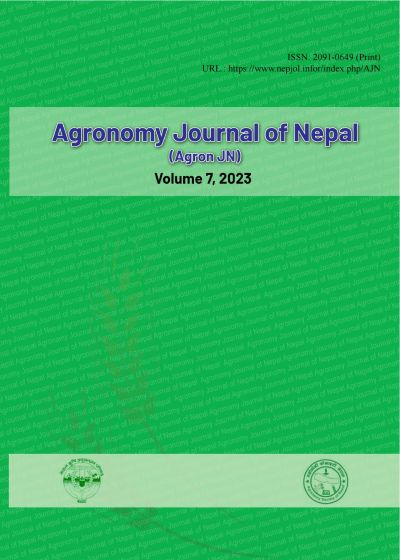Rice Self-Sufficiency Model to Enhance the Food Security Status in Nepal
DOI:
https://doi.org/10.3126/ajn.v7i1.62168Keywords:
rice production, food security, self sufficiencyAbstract
The study focuses on the slow growth of rice production in Nepal and the country's heavy reliance on rice imports to meet its food demand. The government has been spending a significant portion of its budget on imports, and it aims to reduce this dependence by increasing domestic production and achieving food security goals. To understand the dynamics of this issue, system dynamics modelling steps were employed. The key variables considered in the model testing were domestic production, imports, per capita consumption, productivity per hectare, and average area expansion rate. The study utilized time series data from 1991 to 2020 and projected the analysis up to 2050 using Stella Architect, a computer-based software program. The findings reveal that both the population and imports have exhibited exponential growth over the years. The model also indicates goal-seeking behaviour, with the government setting targets for yield increment based on available harvest areas. However, the policies implemented thus far have mostly been quick-fix approaches focusing input subsidized programs. According to the model, an increase of 70-100% in rice production will be required by 2050 to meet the growing population's demand. The study presents three policy options for achieving rice self-sufficiency: 1) a 2% annual increase in average area expansion, 2) raising productivity from 3700 kg ha-1 to 5000 kg ha-1 and 3) increasing productivity to 3900 kg ha-1 while reducing per capita rice consumption from 200 kg to 130 kg. The study suggests that adopting the recommended policy implications can help increase rice production in Nepal. Decision-makers should adopt a dynamic approach to the rice production system to address the issue of slow growth and achieve national self-sufficiency and food security goals.
Downloads
Downloads
Published
How to Cite
Issue
Section
License
Copyright (c) 2023 Agronomy Society of Nepal (ASoN)

This work is licensed under a Creative Commons Attribution-NonCommercial 4.0 International License.
ASON permits for free use, distribution and reproduction in any medium if the original work is properly cited and not used for commercial purposes.




